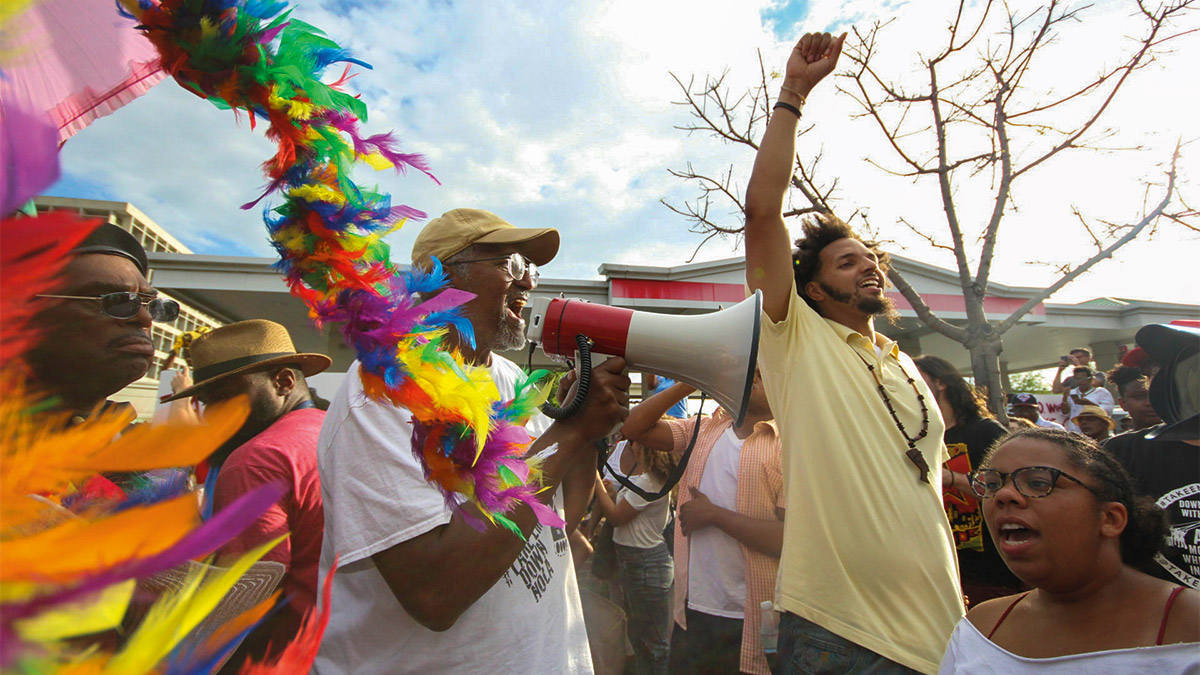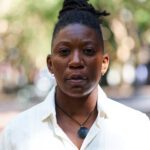Intersectional Black activists have been part of and at the forefront of many liberation movements. From Black Lives Matter to the National Association for the Advancement of Colored People, Black activism has addressed issues such as Black mental health, trans rights, voting rights, ending mass incarceration, disability rights, and more. All these causes work to recognize the injustice or suffering of Black intersectional identities and alleviate that suffering through social and political change.
I work with many activists whose hearts are loving, tender, and ablaze with the dedication to liberate others. In many ways, their goals are similar to the motivations of a bodhisattva, or “spiritual warrior,” whose action is directed to freeing all beings from suffering. However, these activists struggle to find time to rest, feed themselves well, or know what they’re experiencing and how their emotions affect their mind-body. We cannot guide people to liberation if we ourselves do not know our own experience.
“The path of activism, just like meditation, is a practice, not a destination.”
Many of our obstacles are deeply connected to our dependence on and at times inadvertent perpetuation of white supremacy and capitalism. Black activists internalize values of American individualism and the American Protestant work ethic, leading to feelings of urgency that embolden toxic productivity. We fail to realize that accepting such ideologies diminishes the full expression of our humanity, taking us away from being with ourselves.
In How to Connect, Thich Nhat Hanh explains, “Our communities have a deep desire for social justice. This can be obtained only through the transformation of our collective consciousness. All political actions, from protests to lobbying campaigns, will be meaningful only when they are born of our freedom, our understanding and compassion, and our peace and joy.” This points to the first obstacle to our collective liberation—our view. Our view can also be called our “vision” or “intention.” It’s what motivates our actions.
Sometimes in activist spaces there are unrealistic expectations around workload, always at the detriment of connection with the self and others. Many Black people have internalized unhealthy ways of surviving, including normalizing mania, holding the view of us versus them, glorifying a lack of self-care, having the inability to measure what is enough, and focusing on what we didn’t do or accomplish. We’re constantly judging ourselves by the measure of expectations set by the white majority.
Countless times I have seen well-meaning leaders arrive to lead but end up collapsing because their care was left off the agenda. Our disconnection with self, others, and the earth is the crisis and the agenda. If we connect meditation practice to our cause, then we will discover a stable and clear motivation to continue our activism. We will see how differently we engage when we maintain a balance between our activism and our individual, inner practice. The revolution starts within, and it starts with seeing clearly, so that we can guide others to do the same.
I hear you ask, “When do I have time to practice?” The practice is meditation, or bringing your awareness to something in a nonjudgmental manner. Meditation is the natural activity of the mind. If you have made it this far into this essay, it is because you chose to bring your attention to this text. See, you’re already doing it!
When starting, start small; small is not insignificant. Find a space where you can be comfortable and undisturbed for five to ten minutes. Turn off all pings, pongs, and dings from your assorted devices. Ideally, find a position that is upright yet relaxed. Are you still worried you will be interrupted? Put folks you trust on watch—imagine those you trust creating a circle of protection around you, enabling you to attend to your practice.
Now, notice what is actually happening—what do you see, feel, hear? What happens when you bring attention to your breath? We are merely observing; there is nothing to analyze or change. We are observing the fullness of our humanity in this moment. You may notice spaces of tension or confusion or tingling or fear or ease. You are free to experience it all, touch it, and find your breath.
Bring to mind a specific challenge you are facing in your activism. For example, it could be organizing an event, reading an article or book to further your knowledge, dealing with an interpersonal dispute, or collaborating with another activist group. Notice what arises in your mind-body. Thank it for sharing its wisdom and return to the breath. Keep repeating with three to four other challenges, notice what arises, thank it, and return to your breath.
As you allow yourself to touch these experiences, you’re deepening your awareness of what is happening versus your story of what is happening. The stories we create about our experiences are based on emotion and are obstacles to clear awareness. Keep returning to the breath when an experience surfaces; this will loosen your attachment to getting swept up in it. It’s just a cloud passing by. Your breath is your anchor to the power spot of now. When the time has expired, thank your protectors for holding space and thank yourself for choosing to turn toward collective liberation and collaboration for that time.
The path of activism, just like meditation, is a practice, not a destination. Our commitment to practice strengthens the view. We are practicing to end the cycle of separateness (of self from self, from others, from the divine). We do this by connecting regularly with the body, emotional landscape, and mind. In doing this we are becoming familiar with ourselves, and this increases our capacity to be with others.
The “success” of our activism and our liberation is predicated on our ability to stick with our individual practice and hold it as interconnected with collective liberation. The toxic systems we are fighting against are sustained by a divide-and-conquer mentality, so we must come together and see the ways our paths, like limbs on the body, are interconnected.
As Lama Rod Owens tells us, “there is no ultimate liberation without a commitment to social liberation” and that revolution begins with the self. It begins with learning that when we work with all of the confusion of our complex identities and bodies, discomforts, traumas, and dramas, we can gain the clarity to guide others who are suffering. Individual change is for all of humanity. We are all uniquely placed to liberate ourselves and others.

